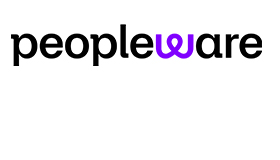Manus Savage of injixo discusses how to convince senior management that it’s time to implement for a workforce management (WFM) tool.
Contact centres purchase workforce management for a number of reasons, but often these are driven by specific requirements from the planning and forecasting teams.
These teams are on the coal face and will be using WFM as part of their day-to-day jobs. But what benefit can WFM bring to senior management?
Is WFM simply consigned to the engine room to become a hidden part of the overall contact centre operations – or does it also provide real value to the C-level in an organisation? If so, you can use those arguments to persuade senior management to buy a WFM tool in the first place.
What Senior Management Wants
Any WFM tool worth investing in will tell you where you are going wrong with your current scheduling practices and reduce the time you spend forecasting.
It’s unlikely your senior manager will have a key personal objective targeted at reducing your workload, but if you can…
- Automate forecasting
- Increase the performance of the contact centre
- Reduce agent headcount, or answer more calls with the existing staff numbers and
- Produce detailed reporting to illustrate savings
- While keeping agents happy
… then this is of real interest to management. Doing more with less, and reporting on the savings is exactly the type of information they want to be made aware of.
Automatic Forecasting
Manual forecasting is hard, time consuming and requires considerable expertise. The more forecasting can be automated, the more your forecast team can concentrate on developing ‘what if’ scenarios for future events, or concentrate on getting additional efficiencies from scheduling.
Automated forecasting removes human error from the calculations and can deliver a real time forecast or customised management insights (including staffing calculations) without recruiting additional planners.
Increased Agent Performance
No manager wants to have to keep replacing staff – it costs a lot to hire agents, they have to be trained to become productive and shortly afterwards they leave.
The best agents are the ones who are happy in their jobs, stay the course, and build up deep product and customer knowledge.
These experienced agents lead to more first time resolutions, in turn leading to higher customer satisfaction and better overall contact centre performance.
A WFM tool can help to retain agents by empowering them. Typical examples are: Easy ways to book leave, offering the capability to do shift swaps and better overall visibility of their team schedules.
This all goes a long way to building agent satisfaction.
On top of that, a WFM platform will also schedule agents appropriately according to their qualifications. A WFM tool can perform forecasts using complex algorithms that predict when calls will arrive by skill within x% accuracy.
This means customers will get through to an agent with the correct skills to resolve their query, resulting in happier customers. Every C level manager will want to see happier customers and an upward trend in NPS scores, as this means more referrals and lower customer (and agent) churn.
Reduced Costs
In most cases this will be the most important factor to a senior level manager as its usually one of the top three KPIs they are measured against (and sometimes bonused on).
It’s important to do your research on how much your new WFM platform will save you in revenue either by increasing productivity (e.g. real time adherence or simply visibility of where your shortfalls and underutilisations are) or reducing lost revenue (e.g. by increasing the number of calls that are answered).
You should then offset this against the total cost, including implementation and support, by means of a solid business case or ROI. Use case studies and industry benchmarking.
The WFM supplier can usually provide these. You can e.g. easily calculate the ROI for the injixo WFM solution with our ROI calculator.
The Right Reports
Reports are a key nutrient in the diet of a senior manager. Some love to get into the ‘nitty gritty’ and dig into the details, and others just want to see the big picture in a dashboard.
When selling the idea of a WFM system it’s important to know what the stakeholders at your contact center prefer.
Make sure that in your business it becomes clear which level of reporting the WFM system can provide. Look at what’s missing from your current portfolio and highlight where the WFM system can plug those gaps.
Of course, reports alone won’t provide a return on investment, but they can help you and senior management identify where you can save money.
Most WFM systems have dashboards that can be displayed in real time either on big screens or a desktop. This will put the managers’ fingers on the pulse and make them feel in control.
Before Your ROI Presentation: Know Your Audience
It’s important to know what drives your stakeholders and ultimately the business. Tailor your business case to focus in on the areas that will have the highest impact on your organisation’s objectives and goals. These are normally the same as the goals of senior management.
For example if your company’s top priority is increasing revenue, you should spend most of your effort identifying how the WFM tool can help you do this. But maybe it’s increasing agent engagement? Then make this the first bullet point in your ROI presentation.
If you need help with developing a solid business case for a WFM tool, don’t hesitate to contact the supportive team of WFM experts at injixo.
This blog post has been re-published by kind permission of Peopleware – View the Original Article
For more information about Peopleware - visit the Peopleware Website
Call Centre Helper is not responsible for the content of these guest blog posts. The opinions expressed in this article are those of the author, and do not necessarily reflect those of Call Centre Helper.
Author: Peopleware
Published On: 11th May 2020 - Last modified: 12th May 2020
Read more about - Guest Blogs, Peopleware






 Peopleware is a leading workforce management (WFM) solution, trusted by over 500,000 users in 30+ countries. With smart forecasting, automated scheduling and real-time management, organizations can optimize workforce efficiency and keep work aligned with demand. From precise time tracking to flexible planning, Peopleware helps organizations boost operational efficiency and foster a more engaged, productive workforce.
Peopleware is a leading workforce management (WFM) solution, trusted by over 500,000 users in 30+ countries. With smart forecasting, automated scheduling and real-time management, organizations can optimize workforce efficiency and keep work aligned with demand. From precise time tracking to flexible planning, Peopleware helps organizations boost operational efficiency and foster a more engaged, productive workforce. 































